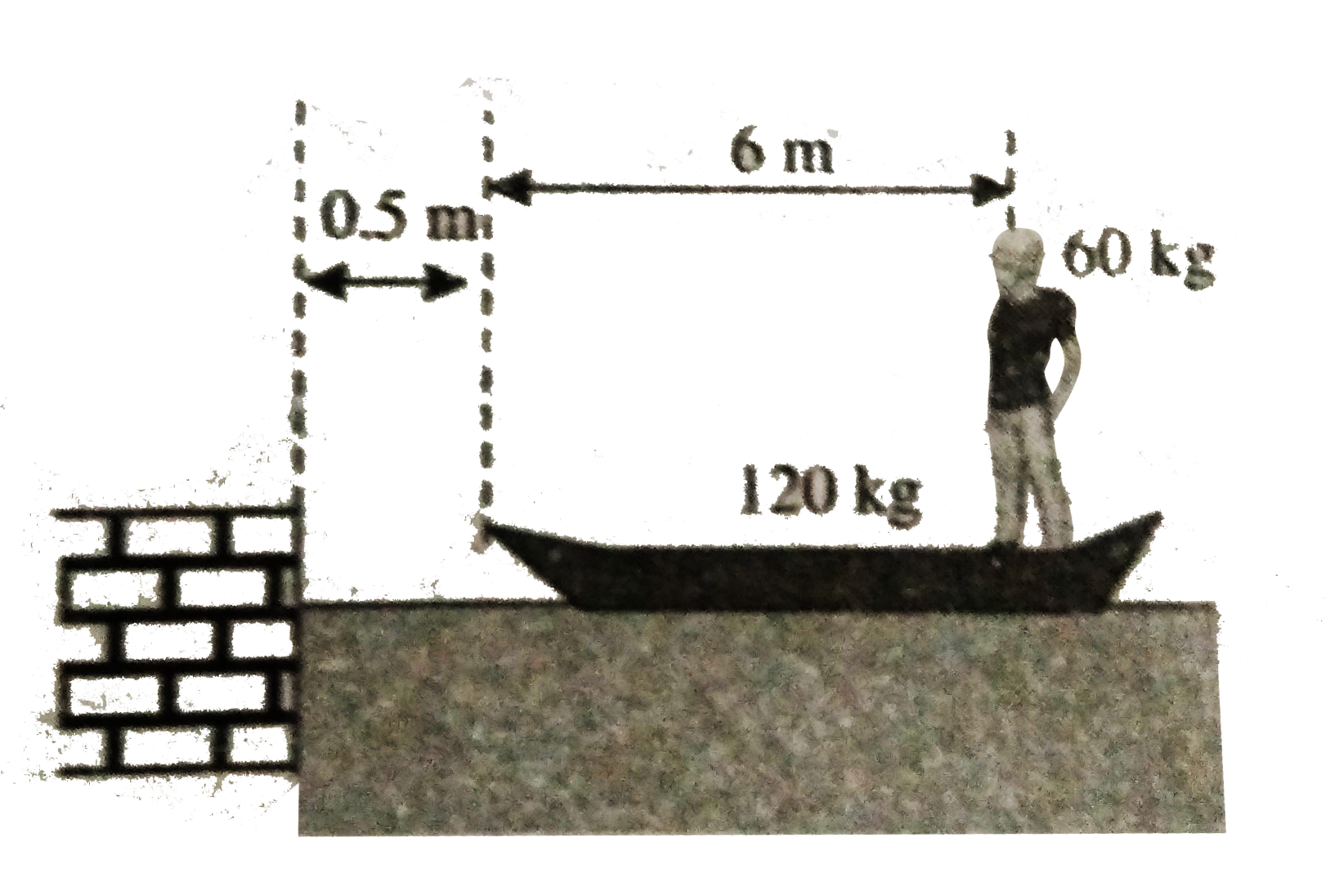To move a boat ahead in water, the boatman has to push the water backwards by his oar. Explain.
To understand why a boatman has to push the water backwards with his oar to move the boat ahead in water, we can analyze the situation using Newton's Third Law of Motion. Here’s a step-by-step explanation:
1. Understanding Newton's Third Law of Motion:
- Newton's Third Law states that for every action, there is an equal and opposite reaction. This means that whenever one object exerts a force on another object, the second object exerts a force of equal magnitude but in the opposite direction on the first object.
2. Action of the Boatman:
- When the boatman uses his oar to push the water backwards, he is applying a force on the water. This action is the first part of the interaction.
3. Reaction from the Water:
- According to Newton's Third Law, the water responds to this action by exerting an equal and opposite force on the boatman and the boat. This means that while the boatman pushes the water backwards, the water pushes the boat forward.
4. Movement of the Boat:
- The force exerted by the water on the boat is what propels the boat forward. Hence, the boat moves ahead as a result of the backward push on the water.
5. Conclusion:
- Therefore, to move the boat ahead in the water, the boatman must push the water backwards with his oar. This action leads to a forward motion of the boat due to the reaction force from the water.
Summary:
In summary, the boatman pushes the water backwards (action), and as a result, the water pushes the boat forward (reaction), allowing the boat to move ahead.
---
- Newton's Third Law states that for every action, there is an equal and opposite reaction. This means that whenever one object exerts a force on another object, the second object exerts a force of equal magnitude but in the opposite direction on the first object.
- When the boatman uses his oar to push the water backwards, he is applying a force on the water. This action is the first part of the interaction.
- According to Newton's Third Law, the water responds to this action by exerting an equal and opposite force on the boatman and the boat. This means that while the boatman pushes the water backwards, the water pushes the boat forward.
- The force exerted by the water on the boat is what propels the boat forward. Hence, the boat moves ahead as a result of the backward push on the water.
- Therefore, to move the boat ahead in the water, the boatman must push the water backwards with his oar. This action leads to a forward motion of the boat due to the reaction force from the water.
In summary, the boatman pushes the water backwards (action), and as a result, the water pushes the boat forward (reaction), allowing the boat to move ahead.
Topper's Solved these Questions
- LAWS OF MOTIONBOOK - ICSECHAPTER - LAWS OF MOTIONEXERCISE - EXERCISE - 3(D) (Mutliple Choice type)
2 Videos
- LAWS OF MOTIONBOOK - ICSECHAPTER - LAWS OF MOTIONEXERCISE - EXERCISE - 3(D) (Numerical)
3 Videos
- LAWS OF MOTIONBOOK - ICSECHAPTER - LAWS OF MOTIONEXERCISE - EXERCISE - 3(C) (Numericals)
23 Videos
- ICSE ANNUAL EXAMINATION -2020BOOK - ICSECHAPTER - ICSE ANNUAL EXAMINATION -2020EXERCISE - SECTION-II
45 Videos
- LIGHTBOOK - ICSECHAPTER - LIGHTEXERCISE - TOPIC 2 Spherical Mirrors (4 Marks Questions )
9 Videos
Similar Questions
Knowledge Check
A satellite, rotating around the earth has water in a jar inside it. A cork is pushed into the water in the jar and then released. The cork will
Arise up to the surface of the waterBsink to the bottom of the jarCremain stable at the pushed positionDstick to the wall of the jar
Air and tap water are mixtures. Explain.
View Solution'Water is essential for life'. Explain.
View SolutionIf a man jumps out from a boat, the boat moves backwards. Why?
View SolutionVelocity of a boat relative to river current and river current velocity are equal in magnitude. Starting from point A on the southern bank, the boatman wants to reach a point B on the nothern bank in north−east from A. In which direction he has to steer the boat?

View SolutionIn plant water moves from
View SolutionIn Fig. a man stands on a boat floating in still water. The mass of the man and the boat is 60kg and 120kg, respectively.

a. If the man walks to the front of the boat and stops. what is the separation between the boat and the pier now?
b. If the man moves at a constant speed of 3m/s relative to the boat, what is the total kinetic energy of the system (boat + man)? Compare this energy with the kinetic energy of the system if the boat was tied to the pier.
View SolutionThe current velocity of river grows in proportion to the distance from its bank and reaches the maximum value v0 in the middle. Near the banks the velocity is zero. A boat is moving along the river in such a manner that the boatman rows his boat always perpendicular to the current. The speed of the boat in still water is u. Find the distance through which the boat crossing the river will be carried away by the current, if the width of the river is c. Also determine the trajectory of the boat.
View Solution
